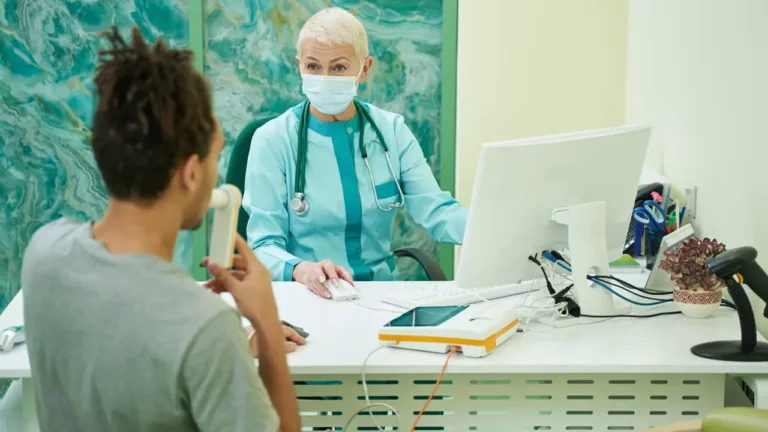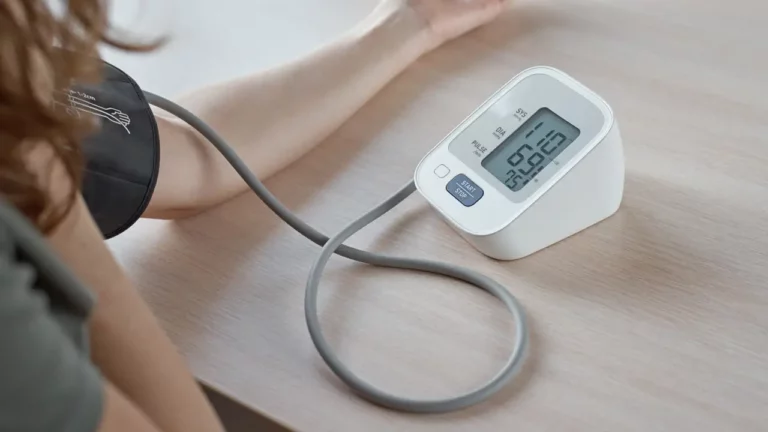This 2023, patient safety remains a critical aspect of healthcare with a continued focus on improving healthcare delivery worldwide. Patient safety involves preventing physical or psychological harm to patients during healthcare. Healthcare providers are responsible for ensuring safe and high-quality care, which underscores the importance of patient safety in health care.
This view has been highlighted during events such as Patient Safety Awareness Week and the World’s Patient Safety Day, which aim to raise awareness of patient safety and promote best practices.
Strategies for Improving Patient Safety
Improving patient safety and quality improvement is a critical topic in healthcare today. The Patient Safety Authority and Institute of Healthcare Improvement are just a few organizations dedicated to advancing health care quality and promoting patient safety. In this context, healthcare providers must prioritize patient safety by following evidence-based practices that aim to prevent harm to patients. They should use quality indicators to evaluate their performance, define and assess preventable patient harm, and regularly connect with patients and their families to improve the quality of patient care.
Healthcare providers must adopt a comprehensive approach to improving patient safety that includes the following strategies:
- Evidence-based practices for advancing patient safety: Healthcare providers must use evidence-based practices to advance patient safety. These practices include identifying and addressing patient safety risks, promoting a culture of safety, and engaging patients and families in their care.
- Addressing medical errors and preventing harm: Healthcare providers must address medical errors promptly and develop strategies to prevent harm to patients. This requires identifying and reporting adverse events, analyzing the root cause of the event, and implementing measures to prevent future occurrences.
- Improving patient safety in healthcare settings: Healthcare providers must ensure patient safety across all healthcare settings, including hospitals, clinics, and long-term care facilities. This requires implementing policies and procedures that prioritize patient safety, such as hand hygiene protocols, infection prevention measures, and medication safety initiatives.
- Policy and procedure updates to prioritize patient safety: Healthcare providers must update policies and procedures regularly to reflect new evidence and best practices for patient safety. This requires staying up to date with the latest research and guidelines and implementing changes to policies and procedures accordingly.
- Ensuring healthcare for all patients: Healthcare providers must ensure access to safe and high-quality care for all patients, regardless of their background or social status. This requires a focus on health equity and addressing disparities in healthcare delivery.
- Highlighting the importance of patient safety across the care continuum: Healthcare providers must prioritize patient safety across the care continuum, from prevention and diagnosis to treatment and follow-up care. This requires a comprehensive approach to patient safety that involves all members of the healthcare team.
Best Practices for Healthcare Providers
Implementing best practices for patient safety and quality improvement is crucial in preventing patient harm and ensuring high-quality care. Healthcare providers should prioritize the following best practices:
Utilizing Evidence-based Practices
Healthcare providers should use evidence-based practices to prevent medical errors and improve patient safety. This includes adopting standardized protocols for medication administration, hand hygiene, and infection prevention. Providers can access clinical performance measures, evaluation frameworks, and guidance on the Institute of Medicine’s website to ensure they are implementing best practices.
Investing in Staff Training and Development
Healthcare providers should invest in staff training and development to ensure that all members of the healthcare team are equipped with the knowledge and skills needed to provide safe and high-quality care. Providers can access webinars, publications, and newsletters to stay up to date on best practices and expand upon their clinical knowledge.
Promoting a Culture of Safety
Healthcare providers should promote a culture of safety that prioritizes patient safety and encourages reporting of adverse events and near-misses. Providers can utilize case studies and assessments to identify areas of improvement and eliminate improper practices.
Emphasizing communication and Teamwork
Healthcare providers should prioritize effective communication and teamwork to ensure patient safety. This includes utilizing tools like checklists, huddles, and debriefs to facilitate communication and collaboration among team members.
Implementing Strategies to Prevent Healthcare-associated Infections (HAIs)
Healthcare providers should implement strategies to prevent HAIs, such as proper hand hygiene and timely removal of surgical dressings. Providers can access resources from the Centers for Disease Control and Prevention to ensure that they are implementing best practices.
Monitoring and Improving Performance
Healthcare providers should continuously monitor and improve their performance to ensure patient safety. This includes using performance measures to track progress and identify areas for improvement.
By implementing these best practices, healthcare providers can improve patient safety, prevent harm, and enhance the well-being of the population they serve.
Resources and Tools for Improving Patient Safety
Improving patient safety is a top priority for healthcare providers and organizations across the United States. To support this effort, there are many valuable resources and tools available. Here are some of the most helpful:
- Institute of Medicine (IOM): The IOM is a non-profit organization that provides guidance and recommendations to improve the safety and quality of healthcare. They offer webinars, publications, and case studies to support healthcare providers and organizations in establishing safe and effective practices.
- Healthcare Facilities Accreditation Program (HFAP): The HFAP is a non-profit accreditation organization that helps healthcare facilities establish and maintain safe and effective practices. They offer assessments and analyses to identify areas for improvement and provide recommendations to enhance patient safety.
- Diagnostic Error in Medicine (DEM): The DEM is a web-based resource that provides education and tools to support healthcare professionals in reducing diagnostic errors, which are a leading cause of injury in healthcare.
- Patient Safety Movement Foundation: The Patient Safety Movement Foundation is a non-profit organization that focuses on eliminating preventable patient harm. They offer webinars, newsletters, and performance measures to support healthcare providers and organizations in implementing best practices to make care safer.
- Healthcare Provider Education and Training Programs: Education and training programs are available for nurses, practitioners, clinicians, and other healthcare professionals to improve their knowledge and skills in patient safety. These programs can help establish a culture of safety and promote timely identification and resolution of patient safety risks.
By implementing these resources and tools, healthcare providers and organizations can establish and maintain a safe and effective healthcare environment, ultimately reducing the risk of injury and improving patient outcomes.
Advancing Evidence-Based Policies to Reduce Medical Errors
Medical errors remain a significant challenge for healthcare providers and organizations, posing a threat to patient safety and quality of care. To address this issue, healthcare organizations must prioritize evidence-based policies that can effectively reduce medical errors and improve patient outcomes.
The Agency for Healthcare Research and Quality (AHRQ) has been at the forefront of advancing evidence-based policies to reduce medical errors. AHRQ provides resources and tools for healthcare providers and organizations to improve patient safety and reduce medical errors. These resources include evidence-based guidelines, toolkits, and educational materials that are essential in developing and implementing effective policies.
One critical policy area that has shown promise in reducing medical errors is improving nurse staffing. Studies have shown that low nurse staffing levels are associated with an increased risk of adverse patient outcomes and medical errors. By establishing policies that prioritize adequate nurse staffing, healthcare organizations can help reduce the risk of medical errors and improve patient safety.
Another policy area that has gained attention is the use of technology to reduce medical errors. Electronic health records (EHRs), barcoding systems, remote patient monitoring technology, and patient safety alert systems are examples of technologies that can improve patient safety by reducing the risk of errors and improving communication among healthcare providers. Healthcare organizations must prioritize the implementation of these technologies to improve patient safety.
DrKumo Remote Patient Monitoring Ensures Patient Safety
Patient safety is a top priority in healthcare, and DrKumo is a company that is committed to providing solutions to improve patient safety through its remote patient monitoring (RPM) technology. DrKumo RPM technology enables patients to manage their health conditions in the comfort of their homes through home health monitors, reducing the risk of patient safety events that may occur during hospital visits.
DrKumo is a technology leader that provides highly scalable, continuous, real-time remote patient monitoring solutions for chronic disease management, acute care, post-operation, and hospital care at home. Their state-of-the-art, HIPAA-compliant, mobile-enabled, continuous real-time monitoring, and AI/ML engine provide a user-friendly solution to healthcare providers and patients alike.
The company’s RPM technology allows healthcare providers to remotely monitor patients’ vital signs, health conditions, and medication adherence in real-time, enabling timely interventions and reducing the risk of adverse events. DrKumo RPM technology is equipped with AI/ML algorithms that provide real-time intelligence to healthcare providers, empowering them to make informed decisions about patient care.
With DrKumo technology, patients can take control of their health, and healthcare providers can deliver personalized care with real-time insights. The company’s culture is innovative, collaborative, and technology-driven, and it is committed to providing effective solutions that improve patient safety and the quality of care for patients worldwide.
Takeaways
Patient safety is a critical concern for healthcare providers, organizations, and professionals. With the help of resources and tools such as those provided by the Joint Commission, AHRQ, and other web sites, healthcare providers and organizations can prioritize patient safety and work towards reducing patient safety events. It is essential to recognize that patient safety is a team effort, and all health care professionals and workers have a crucial role to play in ensuring safe and high-quality care.
Act today to prioritize patient safety and improve healthcare outcomes by exploring the potential benefits of RPM technology for chronic disease management and acute care. Contact DrKumo now.








